Why the Biggest Street Style Photographer in the World (Mostly) Gave It All Up to Design Clothes
On Sunday morning, a group of men all dressed in silk tops took their places behind mic stands, a keyboard, and a drum set, and started to play Janet Jackson’s “Love Will Never Do (Without You).” They said it wouldn't last, we had to prove them wrong, the singers crooned. Female models, ranging in age from English 101 student to grandma, danced down the runway with energy not seen since ‘90 sitcom theme songs, having such a good time I was ready to order 24 episodes on sight. I hadn’t been to a fashion show vibrating with this much joy since, well, ever.
And I wasn’t alone. The austere white studio, the largest space at regular NYFW venue Spring, was awash with smiley fashion people after Deveaux’s presentation wrapped. We had just seen the second show, and fourth collection overall, since former street-style-shooting wunderkind Tommy Ton took the design helm. Here was a piece of evidence—the latest in a growing body—that the man who was perhaps best known for taking an extremely goofy picture of Kanye West, Virgil Abloh, and friends could, in fact, make it as a big-time fashion designer. Or maybe the show made a bigger, possibly more provocative case: that in 2019, there is maybe nothing better on a big-time fashion designer’s resume than having taken that photo. “I remember just meeting Kanye and Virgil the first time—they just were just such fanboys of fashion and they really wanted to do something,” Ton said. And now that something has been accomplished: “I thought to myself,” Ton said, “if they can do it...”
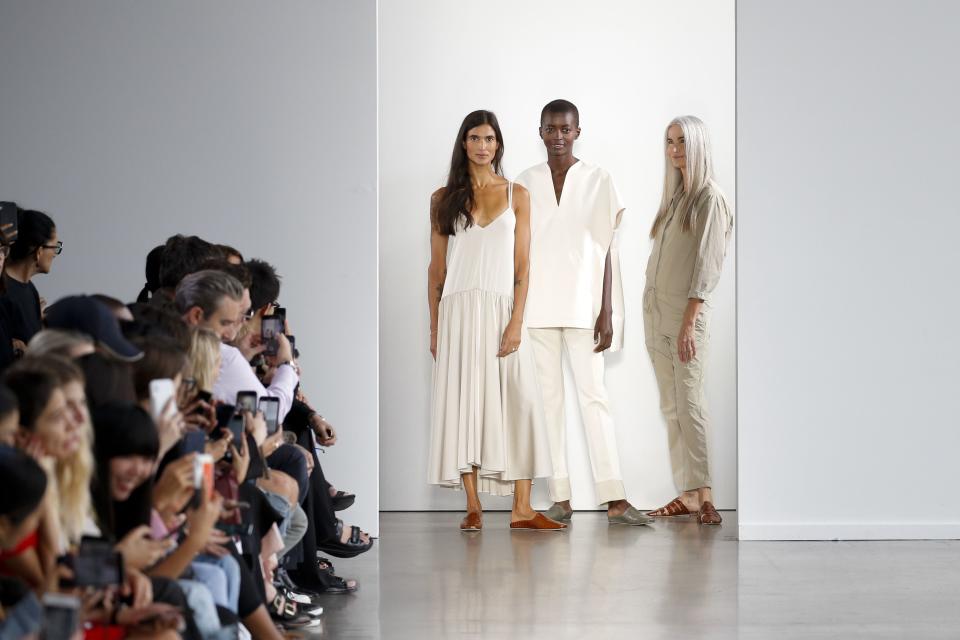
Deveaux New York - Runway - September 2019 - New York Fashion Week
Victor VIRGILE/Gamma-Rapho via Getty ImagesYou don’t necessarily notice how many pictures are actually taken at fashion week until you start paying close attention. Outside the venue, there’s the click-click-click of photographers shooting attendees in their very best. Before the Deveaux show, a woman came around and asked a pair of guests wearing the brand’s clothes if they wouldn’t mind, well, taking a quick picture. And, gosh, during the show, hands shoot up as if in prayer during mass, only they’re stuffed with the holiest fashion-world thing of all: phones open to the camera app. Meanwhile, a small army of photographers is huddled at one end of the venue to clock every single look that traipses down the runway.
This is a world created in part by Tommy Ton, who was, along with Scott “The Sartorialist” Schuman, one of the first people to pay as much attention to what people wore to watch fashion shows as to what they wore while walking in them. You know what happened next: reams of street style galleries, zoo-grade peacocking, and...yes, #influencers. So how did Ton make the leap from beloved street style photographer to burgeoning designer?
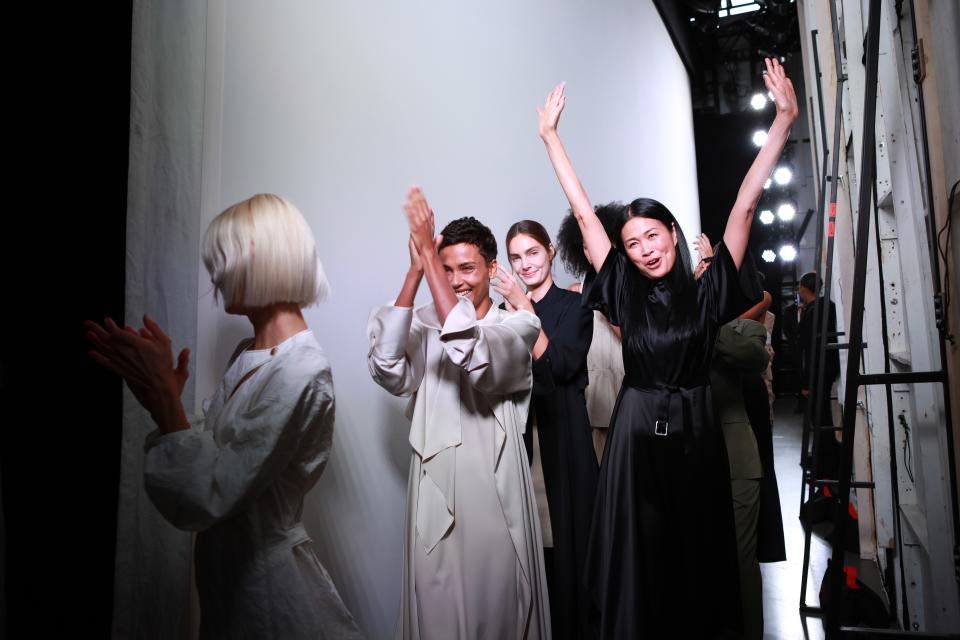
Deveaux New York - Backstage - September 2019 - New York Fashion Week: The Shows
Jason Mendez/Getty Images for NYFW: The ShowsA week and a half before the show, Ton, dressed in a white shirt with the sleeves artfully rolled up so the cuffs flared out just so, did his best to explain. We met on a rainy Wednesday afternoon in his studio, nestled between the two entrances to retailer Opening Ceremony in downtown Manhattan. The workspace is a dream: off to one end is a section with a plush couch surrounded by leather chairs below a chandelier of champagne bubbles fizzing from the ceiling. A tiny Brussels griffon named Roni bounced around the room. It's all of a piece with the ultra-mellow, ultra-refined vibe at which Ton has pointed the brand. The only hint that they are days away from a fashion show—typically a maddening chaos-creating event—are the racks of clothes lined up against almost every wall.
This—the collections, the artistic director title—were always the goal, Ton said. He got into fashion when he was 13, after his sister asked him to tape a television show that featured Tom Ford. Shooting street style photographs was just the way he happened to gain entrance into that world. “I never anticipated becoming a photographer, but it was just kind of a way for me to socialize and meet people,” he said.
But dreaming of taking the leap and actually doing it are two different things. Maybe the scariest bit about Ton’s transition is that he made it: he cracked the insular fashion world, becoming the most in-demand street style photographer and eventually shooting for magazines and brands. And then he decided to leave it all behind. (Although he still does shoot some campaigns for designers like Dries Van Noten.) Because, when Deveaux co-founders Matthew Breen and Andrea Tsao offered him the position at the top of their brand two years ago, he couldn’t resist.
Breen, who founded the now-defunct menswear boutique Carson Street Clothiers, launched Deveaux in 2016. When Ton was brought on in 2017, the clothes were what he describes as “simple, refined”—wearable trousers, lots of outerwear, shirts in muted colors and patterns—and the brief was to continue down that path. Deveaux was still a relatively tiny, unheralded brand—or, in other words, the ideal size to make a splashy but unproven hire. Now, Ton inspires a Hey-I-Could-Do-That feeling among his peers. Overheard at Sunday’s show: “I wanna have a fashion line!”
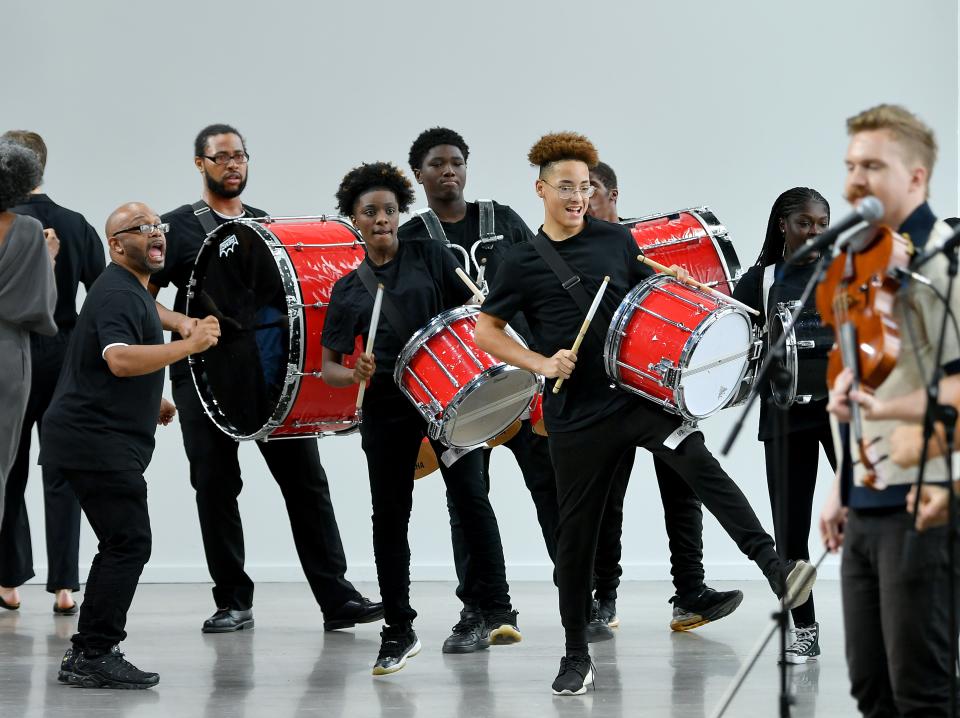
Deveaux New York - Runway - September 2019 - New York Fashion Week: The Shows
Mike Coppola/Getty Images for NYFW: The ShowsTon said he initially heard the skepticism of his ability as a designer. “Obviously, my background overshadows this new chapter in my life and people have preconceived notions of, ‘Does he have formal training?’ or, ‘Who does he think he is doing this?’” Ton said. “Also, we work in fashion, not brain surgery.” Then there were the questions: Could he even sketch? “Does Ronnie [Fieg, the founder of popular streetwear brand Kith] actually sketch everything?” he asked. What made a street style photographer qualified to lead a fashion brand? Maybe a better question: Who better to lead a fashion brand than a former street style photographer?
It might sound crazy, but it’s true: the proliferation of images, especially ones on little screens viewed through Instagram, has wholly and thoroughly reshaped fashion. It’s the reason for the branding bonanza, for bizarrely gimmicky fashion, for the pieces that are too huge or teensy to ignore. Understanding that world—what pops in real life, but also on a phone—may be Ton’s secret weapon.
Because, if the designer knows anything, it’s what fashion looks good in photos. “I like to think that everything that we do would photograph well,” he said. “Because obviously it's one thing when something feels good and looks good in person, but if it doesn't look good in a two-dimensional image, then maybe we did something wrong.” And, paradoxically, Ton’s work taking street style photographs imbued in him an understanding of how clothes appear in real life. “If anything, what I felt my experience brought to this job was I always appreciated and loved seeing clothes in the end result, which is how people wear it," he said. "And seeing if [the clothes] have a life beyond the runway.”
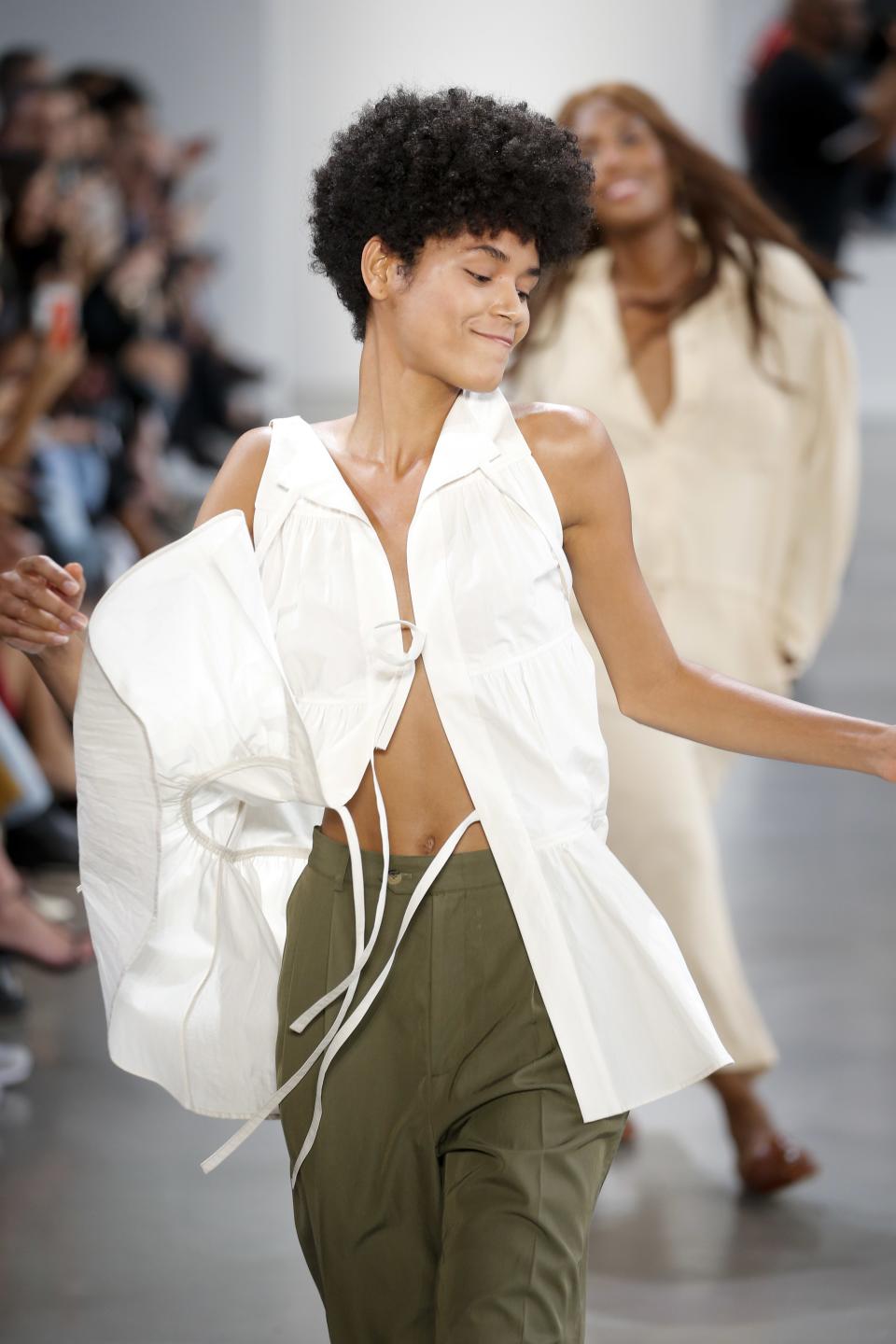
Deveaux New York - Runway - September 2019 - New York Fashion Week
Victor VIRGILE/Gamma-Rapho via Getty ImagesAlthough Deveaux and Ton are smart enough to not just feed the Instagram double-tap beast. I pointed out that he made a good chunk of his career shooting street style, but his clothes don’t look like the type that typically act as the siren call for photographers. They are sleek, understated, and for the most part come in muted colors. “Yeah,” he said. “I know, people say that it's so funny ”
Ton wants to make clothes that are easy to wear, that you’ll put on over and over again, not just when you’re looking to attract the lens of a camera. “I didn't start as a designer, I was a photographer, so being in the trenches and seeing people wear clothes and what makes sense to them, I'm trying to be very mindful of that,” he said. “When you're a designer, you're so far removed from the people that buy your clothes. You have to be out in the streets and understand what kids are wearing or if they give a fuck about what you’re doing.”
This is partially why what Ton showed on Sunday felt almost like an act of rebellion. The fashion runway trot may be boring, but it’s typical for a reason: so that people can get an idea of how the clothes fit, and so that photographers (and editors, and celebrities, and friends-of-the-brand) can get a clear image to disseminate. But Ton’s models strutted and spun around and skipped and danced like no one was watching, even though we were all doing exactly that. They resisted going down the runway in a way that would be easily digestible, instead making it known that these are clothes to live in. (A cynic might say that while this made it difficult to capture the clothes in a static image, the cheerful runway made for a much more compelling Instagram share.)
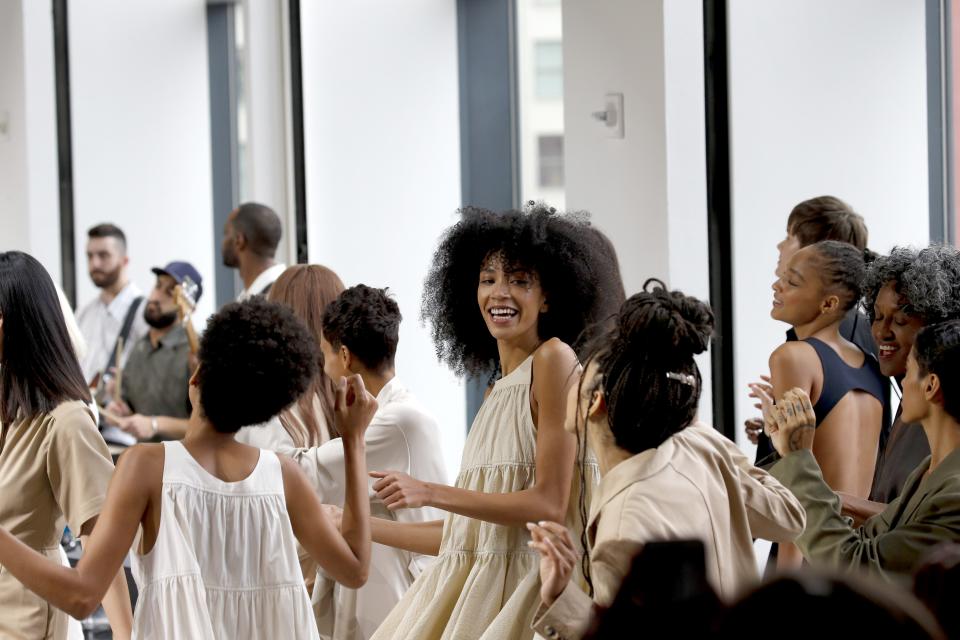
Deveaux New York - Runway - September 2019 - New York Fashion Week
Victor VIRGILE/Gamma-Rapho via Getty ImagesWhat Ton didn’t touch on, but what might be his greatest strength as both a photographer and designer, was his ability to tap into muses. As a photographer, that meant catching the recurring characters who wore fashion better than anyone else and became a staple of his slideshows: then, the Josh Peskowitzes and Nick Woosters who were catapulted into a kind of fashion stardom thanks in part to Ton’s photos of them; now, the unique characters he plucks, from real life and movies, who inspire his collection. He imagines designing for names like Eric Clapton and Diane Keaton: connoisseurs of a certain easeful stylishness.
Back at the studio, Ton brought me over to the latest rack of men’s clothes, including a robe inspired by the one Jesse Eisenberg, playing Facebook founder Mark Zuckerberg, wore in The Social Network. “It's just something really easy to wear and more relaxed,” Ton said. Then, Ton excused himself to go rifle around in the back room for a moment. He came back having made an outfit change: his white button-up became a large, cuddly, brown faux-fur coat that would not be out of place on Aretha Franklin. The coat is inspired by the one Brad Pitt’s character Tyler Durden wears in Fight Club. I thought it looked great in person. But it would probably look even better in a photo.
Originally Appeared on GQ

